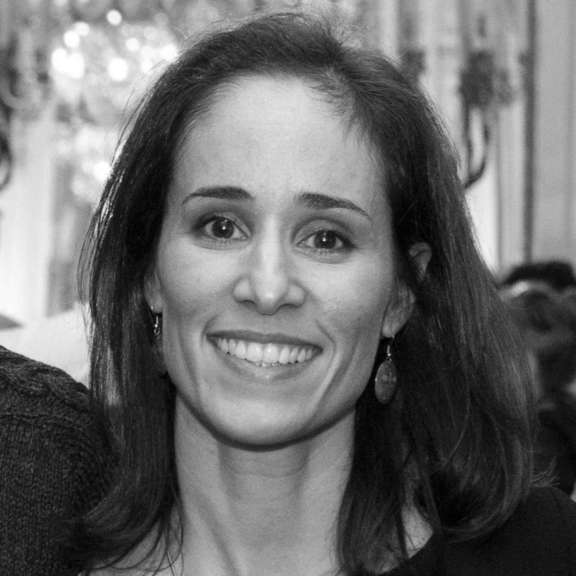Denis-Jacques Fayolle (2)
The Count of Artois's Cabinet at the Hôtel Sérent (1789-1797)
When the Count of Artois was constituting his Cabinet, his sons were living in the north wing of the Versailles Palace, where they shared their lodgings with their governor Sérent and the domestic staff. Since there was little space in which to work, it was decided to move the collection to Sérent's town house at no. 8, rue des Réservoirs, just next to the Palace.

After purchasing this property from Monsieur de Rohan Chabot in July 1780, the Marquis of Sérent had undertaken extensive renovation work, which lasted until 1789. As such, the Cabinet had to be put into storage for three years, and for this Fayolle rented premises at an unknown location. It was then transferred to Sérent's town house and partially installed in a large set of mahogany cabinets, commissioned by Fayolle. These had only just been fitted when the Revolution broke out.

© Ville de Versailles / Pierrick Daul
The young princes did not get to see these new premises: the Count of Artois was one of the first to emigrate, on 16 July 1789, followed in October by the Marquis of Sérent, who received the order to accompany the Dukes of Angoulême and of Berry to the Sardinian Court, to continue their education there. After the Constituant Assembly ruled, in December 1789, that all royal property would be transferred for the benefit of the Nation, there followed the impounding, and, on 30 March 1792, the confiscation of the property of émigrés who had left France after 1 July 1789. The Hôtel Sérent was sealed in 1789 and the Cabinet remained inaccessible for a few months. The collection, untended, became infested, and deteriorated rapidly.
Then, Fayolle himself was appointed as Keeper of the collection once more. He continued organizing it methodically, as he had already started to do some years earlier. In 1793, he began living in the Hôtel Sérent and welcoming visitors to his Cabinet. He thus managed to keep the Count of Artois's collection safe, and to continue vaunting its exceptional qualities.
A prince's Cabinet as a repository of national heritage
In October 1789, Fayolle had been appointed as Commissaire artiste for the temporary Commission for the Arts of the Seine-et-Oise département in the fields of natural history, antiquities, physics, chemistry, and “all the other objects of the Sciences, and also curiosities”. Like all the other members of the Commission, which became permanent in October 1792, his role was to ensure that after the seals were removed from the royal residences, religious buildings, the châteaux owned by émigrés, and so forth, the goods likely to be useful for public education in his field of speciality (the sciences) were saved.

The property transferred to the Nation was first moved to a house on the avenue de Saint-Cloud, then, due to lack of space, to the Versailles Palace, which became the main repository for the works seized in the Seine-et-Oise. However, the scientific objects selected by Fayolle were brought to the Cabinet in the Hôtel de Sérent, with priority to the exotica. The Hôtel in fact became the repository for scientific objects because of fears that moving the collections in haste to the Versailles Palace would damage them further. The Count of Artois's collection was thus swelled by Fayolle's Revolutionary seizures until March-April 1797, when the premises were restituted to the House of Sérent, and rented out. The whole Cabinet was then moved to the Versailles Palace.
A natural history Cabinet at the Versailles Palace
Versailles, the town of the French monarchy, had come under the authority of the government in Paris during the Revolution, and the question had arisen of what to do with the Palace. The Commission for the Arts of the Seine-et-Oise département transformed it first into a central repository and then opened it to the public, following the example of the Paris Musée central des Arts, which was inaugurated in 1793 in the Louvre Palace. On 18 April 1796, the Musée central des Arts de Versailles was inaugurated in the Versailles Palace's Grand Appartement, under its Director, Fayolle. The natural history collection from the Count of Artois's Cabinet, which Fayolle still preserved and curated, was added to it.

Under the constant threat that the Versailles collections would be transferred to Paris, Fayolle devised a plan which was favourably received by the Minister of the Interior, Pierre Bénézech: he expounded his idea of handing over to the Muséum in Paris all the works of the Écoles étrangères held in Versailles, in exchange for those of the École française which were in Paris. This is how the Musée de l’École française saw the light of day in 1797, founded to promote national artistic production in painting and sculpture, including that of living artists. The guide to the collection, published in 1801, mentions the presence of a 'Portrait of the citizen Fayolle, the curator of the natural history Cabinet', executed by the painter François-Valentin Gazard, a member of the Temporary Commission for the Arts, and Assistant Curator of the Musée spécial de l’École française. Since the portrait has still not been located, we have no way of putting a face to the name of Denis-Jacques Fayolle…

© musée du quai Branly - Jacques Chirac, photo Patrick Gries
The Musée de l’École française was specialised in painting and sculpture, and thus had no competence in 'the section for natural history, physics, chemistry and other sciences', which it entrusted to Fayolle, who was by now a recognised curator of collections. But Fayolle had to fight a last battle in 1800, when the newly created École spéciale, based in Versailles, demanded that the natural history cabinet be transferred to its premises for teaching purpose. Fayolle once more petitioned the Minister of the Interior, Lucien Bonaparte, in order to prevent the collection from being dispersed, and also to defend his status as curator-conservator. Fayolle was over 70 at the time. The Minister approved the plea, and Fayolle remained in his post. He died at the end of the summer of 1804. Letellier de Sainteville, his second in command, replaced him. It was he who supervised the transfer of the Cabinet to the Versailles Municipal Library in 1806.
An inquiry to be continued
Despite reconstituting Fayolle's biography here, the origins of the ethnographic collection of the Count of Artois's Cabinet are still obscure. The currently popular hypothesis is that Denis-Jacques Fayolle obtained the items through his family network posted in different parts of the world. However, there is little to corroborate this. Since his speciality was principally natural history, it is reasonable to suppose that the ethnographic collection from the Versailles Public Library - today housed in the musée du quai Branly-Jacques Chirac - does not come from his own personal collection. It most probably comes from the ancien régime Cabinets acquired by the Count of Artois between 1785 and 1789, as well as from the Cabinets confiscated during the Revolutionary period, which Fayolle had access to in his capacity of Commissaire des Arts.
Contributors
Resources
- Pierre-Yves Lacour, La République naturaliste : Collections d’histoire naturelle et Révolution française (1789-1804). Nouvelle édition [en ligne]. Paris : Publications scientifiques du Muséum, 2014.
- Matthieu Lett, « Du château des rois au palais de la Nation : Versailles et le musée spécial de l’École française (1797-1804) », Histoire de l’Art, n°84-85, 2019/2020, p. 43-56.
- Paz Núñez-Regueiro et Nikolaus Stolle, « Les origines du “Cabinet de curiosités et d’objets d’art” de la bibliothèque municipale de Versailles : aléas d’une collection de l’Ancien Régime à l’Empire (1785-1805) », Revue des Musée de France, n°1, 2021, p. 60-67.
Related Topics















